Jerry Garcia died of a heart attack in August 1995, just a month after he played his final concert with the Grateful Dead at Soldier Field in Chicago.
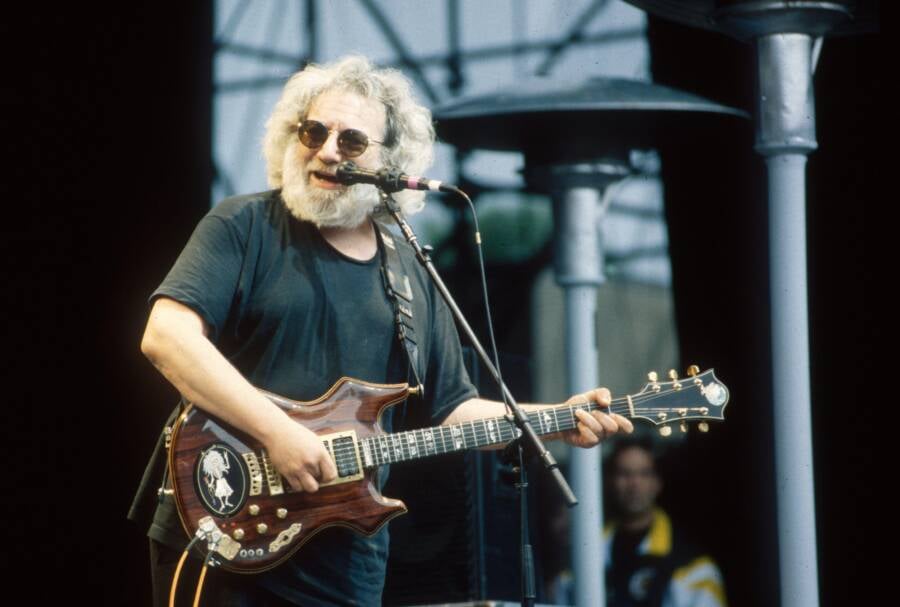
ZUMA Press, Inc./Alamy Stock PhotoJerry Garcia died after years of struggling with a heroin and cocaine addiction.
Jerry Garcia is often hailed as one of the greatest guitarists of all time. The Grateful Dead musician was renowned for his technical skill in multiple instruments, as well as his remarkable ability to improvise — and that raw talent was what helped to make the Grateful Dead such a powerful force in the music scene. But Jerry Garcia’s death in 1995 at the age of just 53 brought his life, and his band, to a sudden, shocking end.
Like many talented artists, Garcia had his demons. He had struggled for decades with substance abuse — particularly heroin and cocaine — and a myriad of health issues including diabetes and weight problems. As he entered his 50s, Garcia finally seemed to be reaching a breaking point. Those closest to him tried to push him to make healthier choices as his health noticeably deteriorated, and Garcia agreed to make some changes.
Hoping to get clean for both his daughter’s wedding and an upcoming Grateful Dead tour, Garcia checked himself into rehab in July 1995 to undergo treatment for his addiction. Unfortunately, it was too late. The stress that Garcia’s poor health and drug use had put on his body was ultimately too much, and the Grateful Dead bandleader died on August 9, 1995.
Jerry Garcia’s death at the age of just 53 marked the end of an era. In the wake of his sudden demise, the Grateful Dead broke up for good.
From High School Dropout To World-Class Musician
Jerome John Garcia was born on Aug. 1, 1942, in San Francisco to Joe and Bobbie Garcia, who named their son after the composer Jerome Kern. Indeed, music was a large part of Garcia’s life even from an early age.
“My father was a musician,” Garcia told Rolling Stone in an interview for the magazine’s 100th issue in 1972. “He played in jazz bands in the places that I play in San Francisco, the same ballrooms. I never knew too much about my father; he died when I was young.”
Though Garcia’s father died in 1947, Garcia certainly followed in his footsteps — even if an accident that same year nearly handicapped his ability to play music. At the age five, two-thirds of Garcia’s right middle finger was cut off by his brother in a wood splitting accident. He made the most of the injury by using it to impress other kids in the neighborhood and, ultimately, it didn’t hinder his path as a musician.
But at first, Garcia was more of a self-described “hoodlum” than a musician. He started drinking around the age of 13, and smoked marijuana for the first time when he was 15.
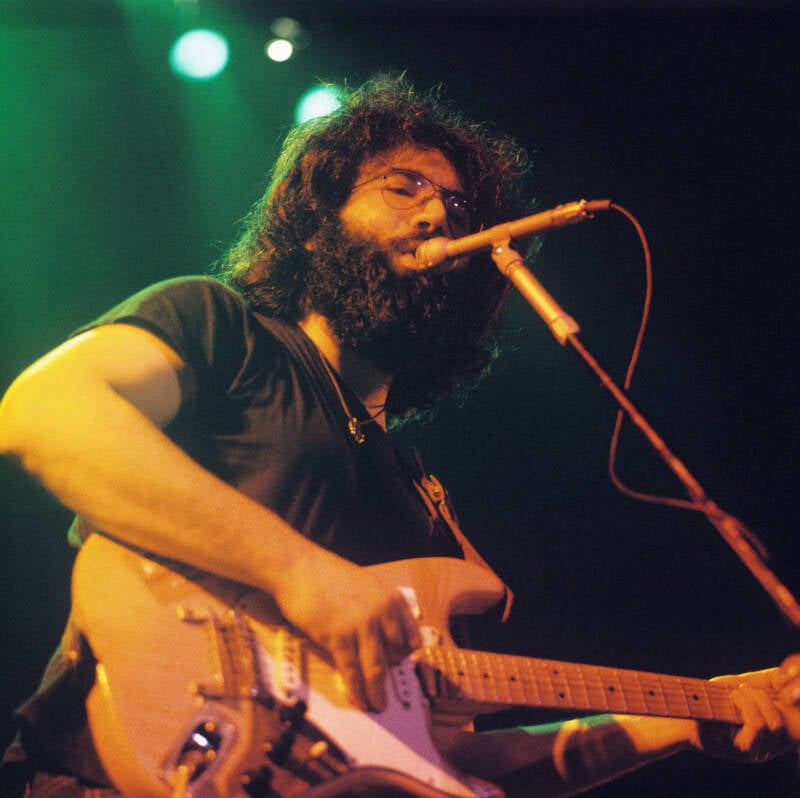
Gijsbert Hanekroot/Alamy Stock PhotoJerry Garcia playing with the Grateful Dead in Copenhagen, 1972.
Even as he explored drugs and alcohol, however, Garcia spent his free time reading, visiting the Art Institute, and listening to rhythm and blues artists like Chuck Berry. He was even given his first guitar on his 15th birthday, but his path to becoming a musician was stymied three years later when Garcia stole his mother’s car. He was given a choice: prison or the Army.
He opted for the latter, though Garcia was anything but the ideal cadet. During his nine months of enlistment, Garcia missed roll call and went AWOL multiple times. After he got out of the Army, he moved to Palo Alto, picked up his old ways, and met Robert Hunter, a fellow musician — and a future member of the Grateful Dead.
The Rise Of The Grateful Dead
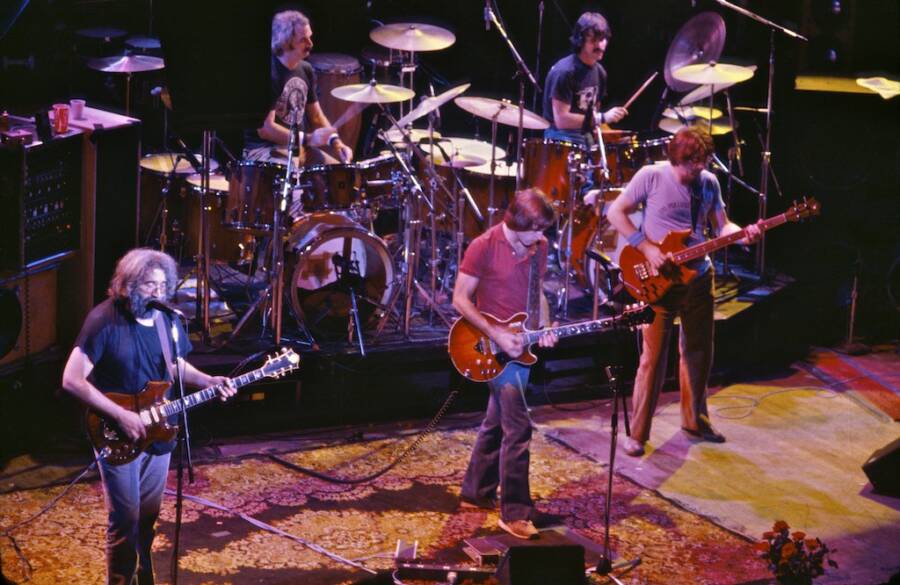
Wikimedia CommonsThe Grateful Dead in 1980.
A year after Garcia met Hunter, he met Phil Lesh, the man who would ultimately become the Grateful Dead’s bassist, at a party in the bohemian neighborhood of Perry Lane. This meeting eventually led them to record a radio show for the local, community-supported Berkeley radio station. Garcia also played both guitar and banjo for several bands during this time, including the bluegrass act Sleepy Hollow Log Stompers.
Then, around 1964, Garcia was introduced to another drug that “changed everything” for him: LSD.
“For me personally, it freed me, you know; the effect was that it freed me because I suddenly realized that my little attempt at having a straight life and doing that was really a fiction and just wasn’t going to work out,” he told Rolling Stone. “Luckily I wasn’t far enough into it for it to be shattering or anything…”
The next year, in 1965, Garcia’s band was looking for a new name. Initially, they wanted to call themselves The Warlocks, but when they learned that another group was already using the name, Garcia opened a dictionary and came across the term “Grateful dead.”
“I picked up a dictionary and literally the first thing I saw when I looked down at the page was The Grateful Dead,” he said in a Mavericks of the Mind interview. “It was a little creepy, but I thought it was a striking combination of words. Nobody in the band liked it, I didn’t like it either, but it got around that that was one of the candidates for our new name and everybody else said, yeah that’s great.”
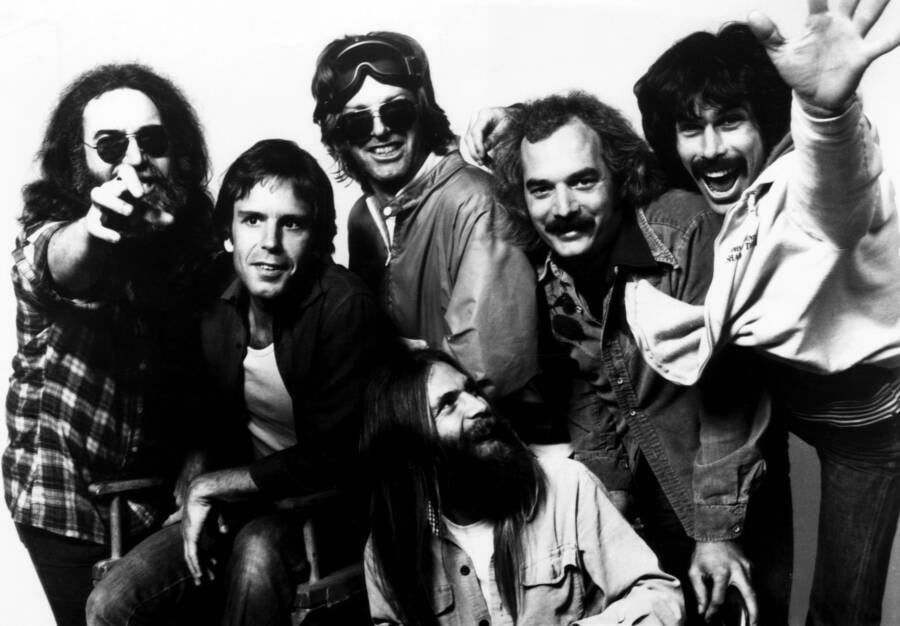
Everett Collection Historical/Alamy Stock PhotoThe Grateful Dead: Jerry Garcia, Bob Weir, Phil Lesh, Brent Mydland, Bill Kreutzmann, and Mickey Hart.
Their listeners agreed. As the Grateful Dead skyrocketed to the status of musical godhood, so-called “Deadheads” flocked to their shows in droves. Their recorded music was captivating on its own, but their live shows were where the band skill shined. Garcia’s improvisational skills talents were particularly lauded by concert-goers.
But according to his bandmate Bob Weir, the heights that the Grateful Dead soon reached came with their own problems. Fans, Weir told the Washington Post in 2022, began to treat Garcia like a god. The pressure that put on Garcia contributed to his reliance on drugs — and ultimately to Jerry Garcia’s death.
“The deification that those folks made of Jerry is basically what killed him,” Weir explained. “It disgusted him, and rightly so.”
The band’s long-time publicist Dennis McNally agreed. As he said during an interview with Booked on Rock, “When [Garcia] lost, for instance, his ability on the road to take a walk because people would be hitting on him, or go to a museum, that hurt. It was too much. And that’s why eventually, he turned to self-medicating himself with various drugs.”
Jerry Garcia’s Ongoing Health Issues And Struggle With Substance Abuse
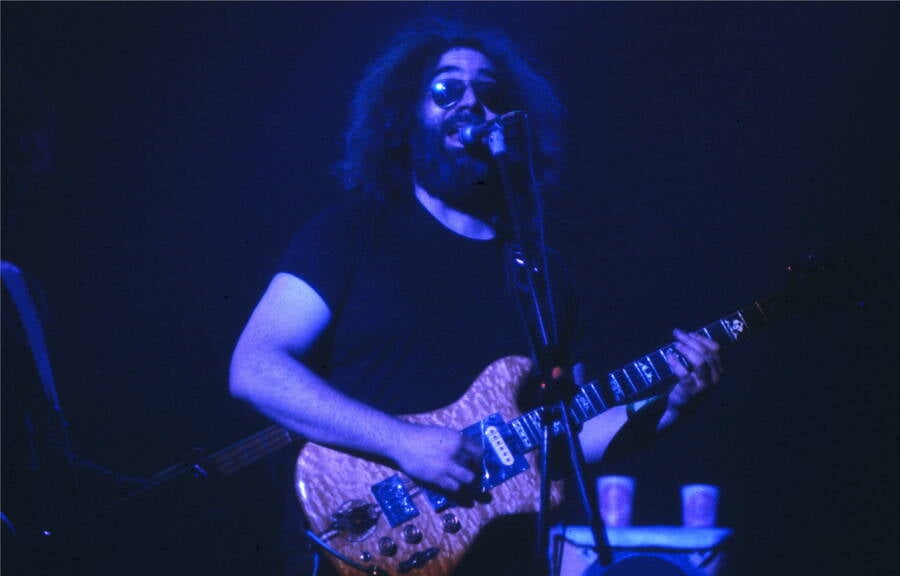
Wikimedia CommonsJerry Garcia in 1978.
The Grateful Dead never stopped touring over the course of their 30-year career. Garcia continued to lean on drugs and unhealthy habits as a way of managing his stress, which led to a serious health scare when he fell into a diabetic coma on July 10, 1986. It lasted five days, and when he woke up, Garcia had trouble with basic motor functions and had to relearn how to play guitar. The Grateful Dead didn’t return to the stage for months.
But that wasn’t the end of Garcia’s health and substance abuse issues.
While fans and critics alike celebrated Garcia’s musical prowess, many also bore witness to some of his lowest moments as they played out before crowds. As Grateful Dead drummer Bill Kreutzmann revealed in his book Deal: My Three Decades of Drumming, Dreams, and Drugs with the Grateful Dead, “[Garcia] was sometimes so incapacitated he couldn’t function.”
Kreutzmann describes how Garcia would drool on his microphone at times or nearly fall asleep during songs. Other times, Garcia would lose his place in a song and simply hum along. Author David Browne describes Garcia’s drug issues in more detail in So Many Roads, The Life and Times of the Grateful Dead, writing, “His hair was longer and stringier (and weirder — when he wore it in pigtails). More troubling was the impact of his addiction on the band’s music… He was also spending more time in the studio bathroom.”
That time in the bathroom wasn’t related to any gastrointestinal problems, though — Garcia was “speed balling,” or shooting up cocaine. The band tried to get him into rehab; Garcia checked himself out. But come 1992, he couldn’t ignore his health anymore.
How Did Jerry Garcia Die? Inside His Final Years
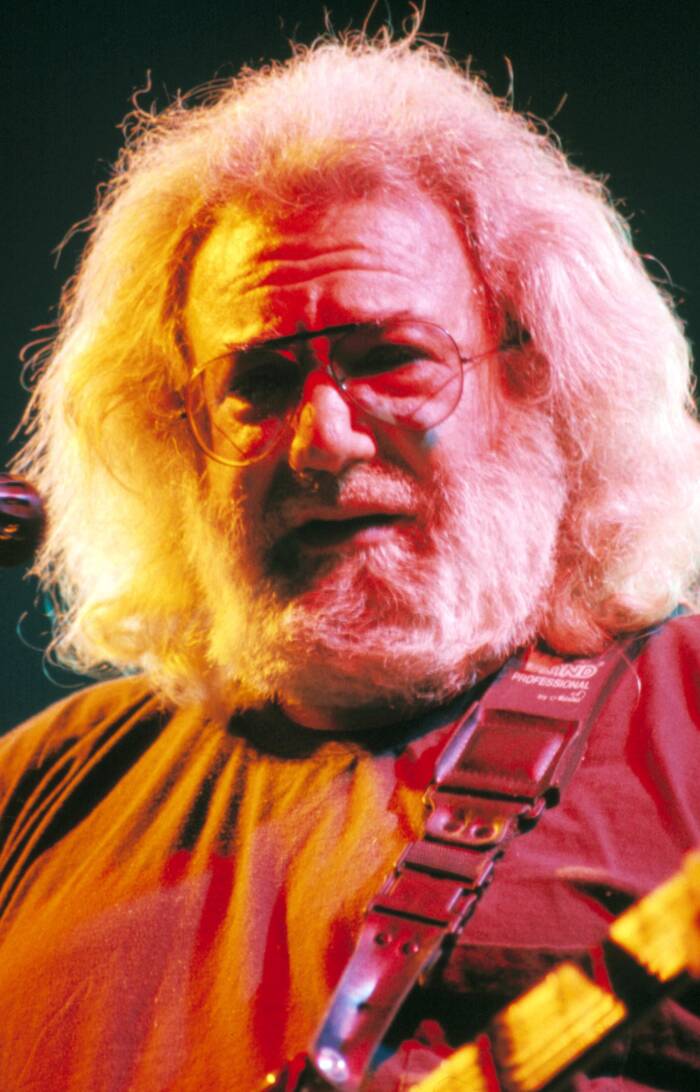
MediaPunch Inc/Alamy Stock PhotoJerry Garcia in 1992, three years before his death.
After a summer tour in 1992, Garcia fell ill, and it seemed like it might be a repeat of the coma he’d experienced six years earlier. Though he recovered, the Grateful Dead once again had to cancel shows — an entire fall tour, to be exact. At that point, Garcia agreed it was time to make some changes. He cut back on smoking cigarettes and started to lose weight, thanks in part to his transition to vegetarianism.
Yet throughout 1993 and 1994, his health continued to decline. He was in his 50s now, but still hadn’t kicked his drug habit. After playing his final concert with the Grateful Dead in July 1995, Garcia checked himself into the Betty Ford Center for a two-week stay. After having some success with the treatment, he then checked himself into the Serenity Knolls treatment center to continue the process.
Unfortunately, years of mistreating his body caught up to him. On Aug. 9, 1995, Jerry Garcia died of a heart attack, likely brought on by some combination of drug abuse, poor diet, and diabetes.
“What he died of was a heart attack,” McNally said, “because he didn’t take care of himself. Because he just didn’t want to. He just sort of put his foot down. Every guy over 40 has to realize that you’ve got to at least watch your diet a little and exercise a little. And occasionally he tried, and then he’d slough off.”
Jerry Garcia’s death also marked the end of an era. After he died, so did the Grateful Dead.
“When Jerry left, that was the end of the Grateful Dead. Period,” Kreutzmann later stated. “There’s just no way that you can replace Jerry Garcia.”
After reading about Jerry Garcia’s tragic death in 1995, read about the final days of Janis Joplin and Freddie Mercury.





